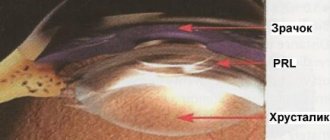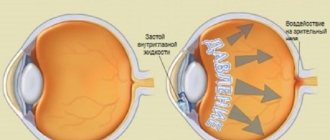When the eyes are burned with lime (calcium carbide), a person receives serious chemical injury to the eyes, accompanied by tissue damage. The main reason for getting such a burn is non-compliance with safety precautions, careless attitude to working with lime, as well as eye damage during accidents. People can encounter hazardous substances both at home and at work.
The severity of the consequences of a chemical burn depends on how professionally emergency assistance is provided to the victim, because the organ of vision has increased sensitivity. If the correct actions are not taken in a timely manner, a person may remain disabled, losing the ability to see completely. Vision is very important for every person. Thanks to our eyes, we not only receive information about the objects around us, but also perceive colors and get joy from life.
In case of eye burns with lime (calcium carbide), small granules of powder fall on the tissues of the eyeball and lead to their rapid destruction. Therefore, it is important to be able to react correctly to a problematic situation in the first minutes. In the article we will tell you in detail how to properly provide emergency assistance to an injured person, what stages of burns exist, and how to further treat vision after such an injury.
Why can't you hesitate?
When lime gets into the area of the eyeball, it is initially difficult to diagnose the degree of destructive effects on eye tissue. This is due to the fact that such a lesion initially looks small. After providing first aid, a person thinks that he has completely dealt with the problem. But this is not true at all. A chemical burn to the eye can lead to serious visual impairment and defects in the eye tissue. Thus, perforation of the cornea may occur, which can lead to atrophic changes in the tissues of the organ of vision.
Even after correctly provided first aid, it is imperative to contact emergency medical services as soon as possible to continue treatment procedures, so that the burn does not affect the deep tissues of the eye and lead to complete blindness.
Classification and causes of damage to the organ of vision
Most often, a chemical or thermal burn of the eye mucosa occurs, less often radiation, each of them has its own provoking factors and characteristics of the course.
Chemical
The causes of eye burns are the contact of alkalis and acids in the area of the organ.
Toxic alkalis include:
- Caustic soda;
- Caustic potassium;
- Ammonia;
- Ethyl;
- Lime.
Among the dangerous acids are:
- Sulfur;
- Wine;
- Vinegar;
- Salt.
Injury can be caused by construction varnishes, paints, and other industrial substances entering the organ area. A burn on the eyelid can occur after exposure to poisons from toxic plants, such as hogweed.
In many cases, self-medication, improper prescription of eye drops, and potent medications cause additional damage.
The composition of the damaging substance is of no small importance, for example, liquid - when it enters the organ of vision, it mixes with tears. Thanks to this, they come out of the cavity faster and cause less damage.
Ray
First aid after injury
Let's look at how to act in case of eye burns with lime (calcium carbide) in the first minutes after injury.
The first step is to carefully remove the pieces of powder using a cotton swab. It is best if several people participate in providing assistance to the victim, since it is quite difficult for one person to cope with the task. One assistant should pull back the eyelid, and the other should carefully clean out all the lime particles. You can simply pull the lower eyelid down, and try to bend the upper eyelid in the opposite direction (turn it out).
Many people are interested in the answer to the question of whether it is allowed to wash eye burns with lime with water. Some articles on the Internet recommend rinsing immediately with water. But this absolutely cannot be done. Everyone knows how lime reacts when mixed with water. When water is added to a bucket of lime, the mixture begins to foam and boil, and the temperature rises significantly. This can be easily checked by touching a metal bucket with your hand. This is well known to gardeners who treat trees with lime against pests in the spring.
If you start washing your eyes before removing lime particles, a chemical reaction will occur, and a violent reaction will occur, which will only worsen the situation. Remember! First you need to remove all pieces of lime with a cotton swab and only then rinse your eyes under running water. If your eyes hurt after welding, we recommend reading what to do next in the article: https://fb.ru/article/97666/uu-bolyat-glaza-ot-svarki-chto-delat-v-domashnih-usloviyah.
Eye burn from lime (calcium carbide). Clinics. Consultation with an ophthalmologist.
An eye burn with lime (calcium carbide) is a type of chemical burn of the eyes, which is accompanied by tissue damage. Burn injury to the eye is a consequence of non-compliance with safety rules. Regardless of what substance it is caused by, you must immediately rinse your eyes with plenty of boiled water and apply a sterile bandage. After this, you need to call an ambulance.
An eye burn is more dangerous than damage to the skin. The human organ of vision is characterized by increased sensitivity and tenderness. If there is a delay in providing emergency assistance, a person may lose his sight and remain disabled for life.
We receive most of the information about the world around us using a visual analyzer. If its function is impaired, a person not only loses his ability to work, but also the ability to perceive all the colors of the world around him. He will not be able to read, watch movies, admire works of art or nature.
When a lime burn occurs, pieces of calcium carbide enter the tissue of the eyeball. Their rapid destruction occurs, which leads to irreparable consequences. It is important to provide competent first aid in the first minutes after an injury at the scene of an accident.
First aid for eye burns with lime
If your eyes are burned with slaked lime, you must perform the following procedures:
- rinse your eyes thoroughly with a stream of running water;
- try to turn your eyelids out and carefully remove with a damp swab all the particles of lime remaining after washing;
- rinse the eyes with a 3% solution of disodium salt of ethylenediaminetetraacetic acid, which reliably binds calcium cations to form water-soluble complexes that are easily washed out within one day.
After this, regardless of the degree of the burn, it is necessary to hospitalize the victim in an ophthalmological hospital. If for some reason hospitalization is delayed, 2 drops of ethylenediaminetetraacetic acid disodium salt should be instilled into the eyes every hour.
A burn injury to the eye is very dangerous. You should not be careless if you get lime in your eyes, as this can lead to complete or partial loss of vision. First aid should be provided immediately after injury. For chemical burns to the eyes, hospitalization should not be avoided.
The best eye clinics in Moscow
Below are the TOP 3 ophthalmological clinics in Moscow where eye diseases are treated.
Stages of a chemical burn to the eye
Experts distinguish 4 stages of damage to the eyeball in burns of this kind, which have varying degrees of severity and depth of penetration into the eye tissue.
Let's look at them briefly:
- Easy stage. Minor epithelial disturbances are visible on the eye. There is redness of the mucous membrane and swelling is noticeable.
- Moderate weight. The chemical burn affected the surface of the skin around the eyeball and the cornea. Blisters from the burn grow around the eyes, and a film or erosive lesions of integrity are formed on the cornea.
- Severe damage is accompanied by necrosis of the deep layers of the eyeball, white or yellowish scabs appear. The layer of the cornea becomes not transparent, but matte. Severe swelling of the skin around the eye forms, and damage to the cornea and conjunctiva is visible.
- Particularly difficult stage. A severe burn leads to necrosis of all tissues adjacent to the eye. These are deep lesions of the cornea, sclera and conjunctiva. The scabs already have a darker color, from grayish to brown. The cornea in this case resembles porcelain.
Causes and damaging substances
In ophthalmology, of all eye herbs, 5 to 15% are burns. Up to 75% of cases occur in industries, the remaining 25% in everyday situations.
Over 40% of chemical burns occur due to various alkalis getting into the eyes. Among them we can highlight such caustic compounds as ammonia, slaked lime, caustic potassium, ethyl alcohol, caustic soda.
About 10% of cases of such injuries occur due to interaction with concentrated acids, such as hydrochloric, sulfuric or acetic acid. Other accidents include careless handling of construction varnishes and paints, household aerosols, herbicides, insecticides, and calcium carbide.
There have been cases of people going to the clinic after mistakenly instilling solutions not intended for this purpose (ear drops or some alcohol tinctures) into the fundus of the eye.
Reference Information! Some burns can occur due to the use of poor quality mascara or as a result of interaction with poisonous plants (the most common culprit of eye injuries is the hogweed flower). In self-defense, you can also harm your eyes, for example, when using gas pistols and spray cans.
With alkaline exposure to the eyes, colliquation necrosis develops, manifested in the form of a hydrolytic effect on cell membranes, causing cell death and enzymatic destruction of tissue. Accurate information about the severity of the damage can only be obtained after 48–72 hours.
Acid that comes into contact with the eye causes coagulative necrosis, which is manifested by the denaturation of cellular proteins and the appearance of a stupor. These pathological changes can be mild and sometimes completely absent. Next, inflammation appears due to a toxic reaction and the addition of a secondary infection.
Treatment of burns with lime
In case of eye burns from lime (calcium carbide), after providing first aid, it is imperative to go to the hospital within a few hours; it is best to call an ambulance so that delivery is quick. Typically, doctors hospitalize such a victim in the inpatient department of the hospital for further monitoring of the patient’s condition.
If the burn was received at a chemical plant, then the first aid kit should have a container with a 3% solution of disodium salt of ethylenediaminetetraacetic acid, which is briefly called Na2 EDTA. This solution binds calcium cations, and the resulting mixture is easily washed away with water during the first day.
In the hospital, the burned skin of the eyelids is lubricated with substances such as 10% sulfacyl sodium ointment or 10% sulfapyridazine sodium ointment, 1-5% synthomycin emulsion or 1% erythromycin, tetracycline ointment or sterile fish oil. Also, such ointments can be placed under the eyelids of the affected eye.
Antihistamines are prescribed to help restore visual function of the eye. It is recommended to wash your eyes several times a day with distilled water or tea infusion.
If spasms are present, then drops of atropine are applied to the area of the conjunctival sac. Sometimes intramuscular injections are given. In mild forms of the lesion, the patient is kept in a hospital for only a couple of days for observation and then discharged under the supervision of a local ophthalmologist.
Treatment and first aid
I got lime in my eye - what should I do? First of all, try to collect yourself, calm down, and concentrate on solving the problem. Remember a few simple rules for providing first aid for a chemical eye burn.
- Rinse your eyes thoroughly with clean water. The victim may even dive headfirst into a large container of water and blink.
- Pull back the eyelid with tweezers and then use a damp swab to remove small pieces of limescale that are not washed off with water. It is very important to remove all parts of this substance in time, so as not to miss anything.
- If you have a 3% Na2 EDTA solution in your first aid kit, use it to wash your burned eye. Such a substance is capable of binding calcium cations, forming a complex that is easily soluble in water. Even if lime particles remain in the eye, such a solution will neutralize them and help quickly remove them from the body naturally.
Even if it seems to you that the burn is not significant, be sure to consult a doctor. Patients with chemical burns to the eyes are subject to mandatory hospitalization and require professional treatment under the supervision of an ophthalmologist. If for some reason you cannot go to the hospital immediately, instill Na2 EDTA solution 2 drops into the eye every 2 hours.
Prevention
Eye burns caused by lime (calcium carbide) require long-term treatment and specialist supervision, so it is advisable to take precautions to avoid such injury.
Keep the lime in a closed container and be sure to label it so everyone knows what kind of powder it contains. Wear safety glasses before use, and after use, remove all remaining substances to a safe place. Take care of yourself!
Symptoms
When an eye burn occurs, the primary characteristic symptoms occur:
- strong pain;
- tearfulness;
- redness;
- edematous manifestations;
- a fog appears before the gaze;
- unable to open the injured eye;
- at the slightest opening there is pain from sunlight;
- there is a feeling of interference in the eye;
- Numerous blisters appear on the skin around the eye.
The most serious complications that may occur hours or days after injury are:
- decreased visual acuity;
- swelling of the conjunctiva and the occurrence of hyperemia;
- development of perilimbal ischemia;
- increased pressure inside the eye;
- defective manifestations in the corneal epithelium;
- stromal opacification;
- thinning of the cornea;
- inflammatory processes in the anterior part of the eye;
- formation of scars on the surface of the conjunctiva.
Secondary complications may include:
- glaucoma;
- cataract;
- perforation, ulcer, vascularization of the cornea;
- subatrophy of the eyeball.
Eye burn with lime (calcium carbide): symptoms and emergency care
When the eyes are burned with lime (calcium carbide), the tissues of the eye apparatus are damaged. This type of chemical burn occurs when safety rules are not followed or there is a production problem. A person can encounter such a problem at home and during the work process. How serious the consequences will be depends on how quickly and correctly medical care was provided.
Varieties and symptoms
Depending on where exactly the violation was localized, the burn may spread to the conjunctiva, eyelids, or cornea. Depending on the severity of the disease, there are 4 degrees. It is quite difficult to accurately diagnose it in the near future after the incident. This is due to the fact that at first the damage seems minor, but after a few days serious consequences begin. Perforation of the cornea, changes in it and complete atrophy of the eye may occur.
Therefore, in case of eye burns with lime (calcium carbide), urgent medical attention will be required before visiting a doctor, after which the patient will be urgently taken to the nearest trauma center.










